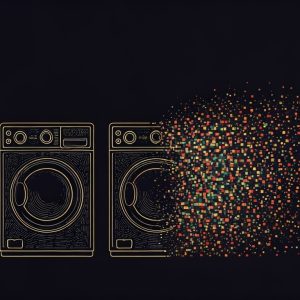
The internal combustion engine is an engineering marvel – and, unsurprisingly for a machine powered by a succession of tiny, contained explosions, notoriously brittle. According to Highways England, there were some 274,596 vehicle breakdowns in the UK in 2023, almost all of them requiring callouts from roving mechanics employed by one of the country’s big three rescue services. The AA prides itself as the quickest of the trio to reach its stranded members – though, until very recently, it seemed like its mechanics were taking longer and longer to repair the frayed cambelts, dodgy clutches and blown tires bedevilling the sad, dejected motorists sitting on the UK’s many hard shoulders.
That, explains The AA’s group chief information officer Antony Hausdoerfer, was because the organisation was finding it increasingly difficult to connect to its own rescue vans. Mechanics were reliant on SIM-enabled tablets to report their whereabouts and repair analytics back to headquarters, but these could only hop onto 3G and 4G networks.
The former is increasingly unreliable and only has so long to live (the network will be formally euthanised in 2033.) Soon to be left with just 4G and tied to a single network provider, The AA was facing a future beset with significant service dropouts and connectivity blackspots that were already starting to warp team analytics and give the impression mechanics were spending longer and longer repairing vehicles by the roadside.
With devices taking more time to connect to the network, engineers’ performance seemed to be deteriorating. Unable to accurately assess the performance of its patrols, Hausdoerfer knew something had to change.
“Our patrols could be anywhere from the Highlands to the islands, and we need to be wherever our customers are,” he says. “That becomes hard when you are stuck with one network provider and reduced access in certain places.”
According to UK telecom regulator Ofcom standards, average network coverage is in the range of 93%. AA patrols – so often called to the middle of nowhere – were achieving only 89%. Not terrible, but not great, either.
“The difference may not sound like much, but it is significant,” says Hausdoerfer, and the quest to reach the Ofgem average lit the fuse on a process of testing multiple alternatives, including satellite connectivity for its vans (though, adds its group CIO, this “seemed like overkill to us.”)
The AA’s rout(er) map
In the end, all it took was a router. By using Ericsson’s R1900 router to broadcast a WiFi signal from a van through an additional antenna, engineers could suddenly access 3G, 4G and 5G networks without difficulty.
An initial trial involving 350 vans led to a 9.5% uptick in connectivity for the participating fleet and its overall coverage reaching 98.5% – far beyond its initial target. What’s more, Hausdoerfer continues, the AA also succeeded in maintaining that connectivity up to 25m from the patrol vehicle using the router, allowing engineers more parking flexibility during callouts and repairs in more remote, physically dangerous areas much less of a dicey proposition.
“We can also fix more problems from head office,” he says, as the improved connectivity provides the necessary data to better understand the experience of the organisation’s remote workforce. “We can see if we are having a device problem or a network problem, so rather than scratching our heads about what to do, we can rather clearly see whether or not we need to take a patrol off the road.”
Customer satisfaction has spiked now that the router has been rolled out to 2,700 patrol vehicles, he claims. And the engineers seem to rate the new system too, especially in the way that it more accurately logs repair times by the roadside. “We were starting to see some negativity creeping in among colleagues,” Hausdoerfer concedes. “Now, they have the tools to do the job.”






